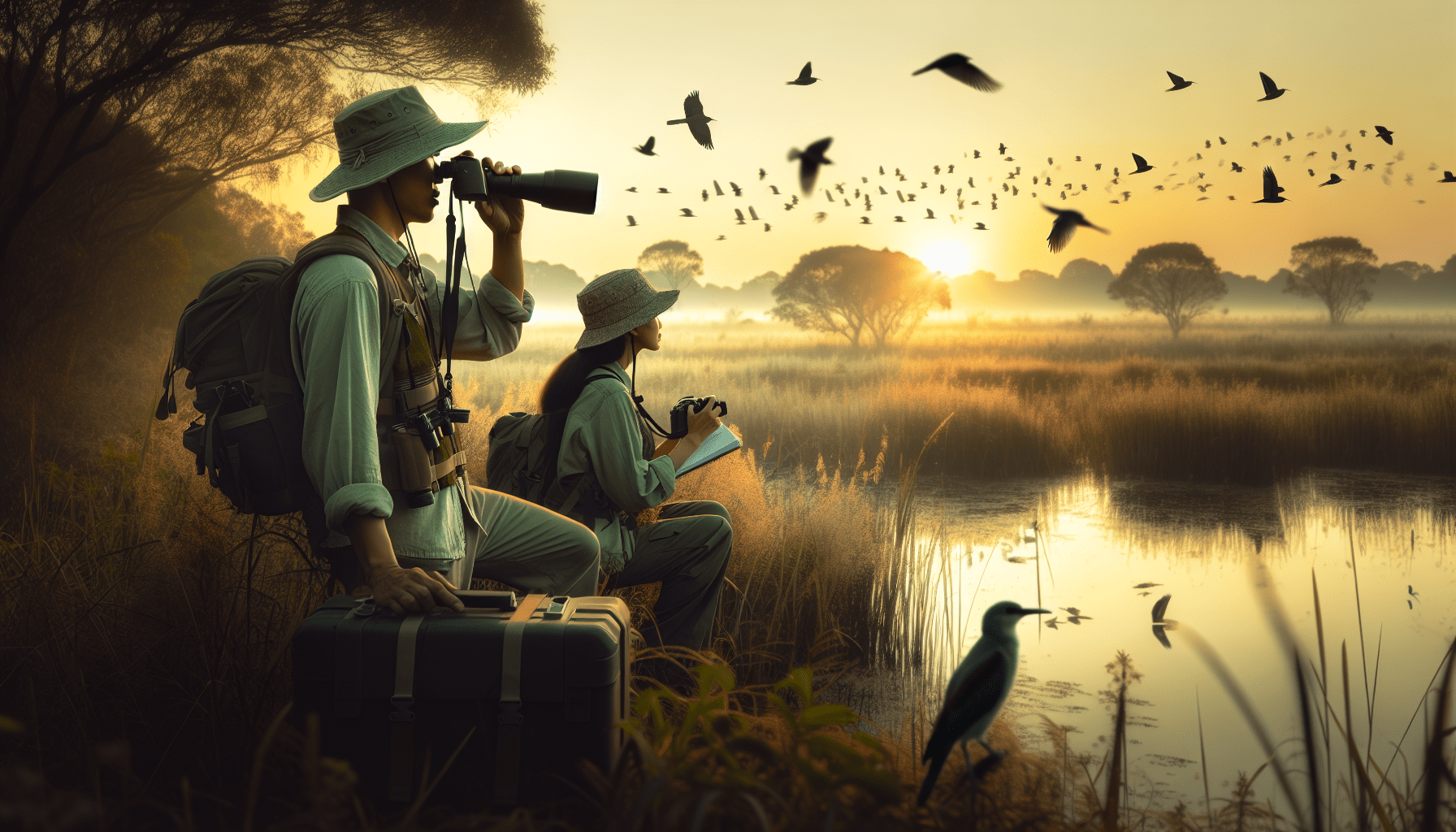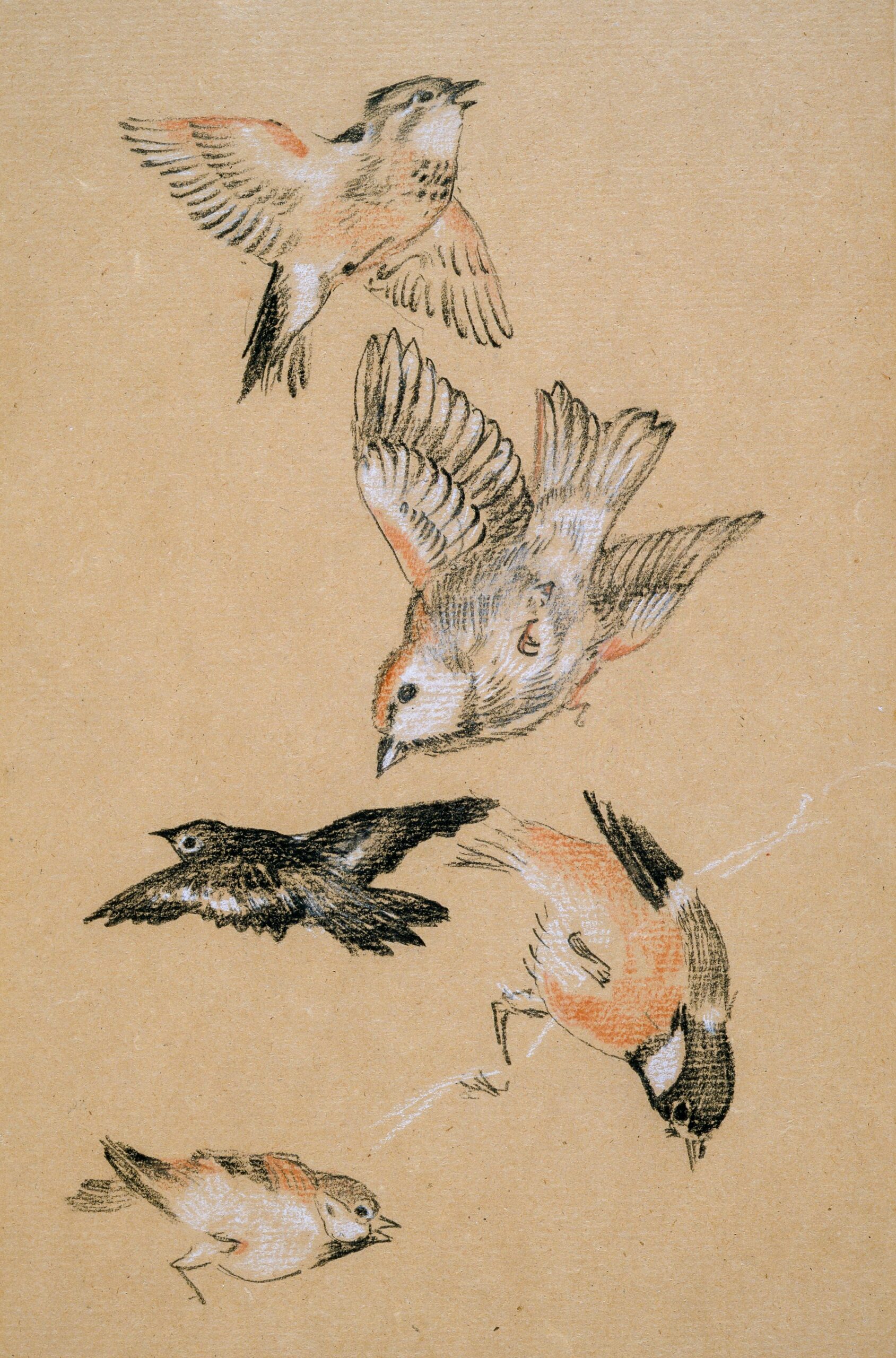Are you an avid birdwatcher in search of hidden gems to observe rare and endemic species? Look no further! In this article, we will take you on a journey to discover the best-kept secrets of birding spots around the world. From remote islands to hidden rainforests, get ready to embark on an exciting adventure filled with stunning sightings and unforgettable experiences. Whether you’re a seasoned birder or just beginning your feathered fascination, these secret spots will surely ignite your passion for birdwatching and leave you in awe of the incredible diversity that exists within the avian world. So grab your binoculars and let’s embark on an extraordinary birding escapade together!

National Parks
Parks known for bird diversity
National parks are often home to a wide range of bird species, making them ideal locations for birdwatching enthusiasts. Some national parks have gained a reputation for their exceptional bird diversity, attracting birders from all over the world. Yosemite National Park in California, for example, is known for its diverse bird population, which includes the magnificent California Condor and the beautiful Western Tanager. Other bird-rich national parks include Everglades National Park in Florida, Great Smoky Mountains National Park in Tennessee and North Carolina, and Denali National Park in Alaska.
Remote areas within national parks
While national parks are generally popular tourist destinations, there are often remote and less-explored areas within these parks that offer unique opportunities for birdwatching. These hidden gems allow you to escape the crowds and immerse yourself in the natural beauty of the park while observing a variety of bird species. Examples of such remote areas include Hoh Rainforest in Olympic National Park, Washington, where you can spot the Marbled Murrelet and the Northern Pygmy Owl, and the North Rim of Grand Canyon National Park, Arizona, where you might be lucky enough to see the Peregrine Falcon soaring above the breathtaking landscape.
Endemic bird species in national parks
National parks can also be home to endemic bird species, which are birds that are found only in specific regions or habitats. By visiting these parks, you have the opportunity to observe these unique and often rare bird species in their natural environment. For instance, Haleakalā National Park in Hawaii is home to the critically endangered Maui Parrotbill, while Channel Islands National Park in California is the habitat of the endemic Island Scrub-Jay. These national parks provide a valuable opportunity for birdwatchers to appreciate and contribute to the conservation of these special birds.
Nature Reserves
Reserves with protected bird habitats
Nature reserves play a crucial role in protecting bird habitats, giving these feathered creatures a safe space to nest, breed, and thrive. Many nature reserves are specifically designated to safeguard important bird areas, providing sanctuary for both resident and migratory species. Places like Point Reyes National Seashore in California, Cape May National Wildlife Refuge in New Jersey, and Bolsa Chica Ecological Reserve in California are renowned for their protected bird habitats. These reserves offer a haven for birds, where you can witness them in their natural habitat and potentially spot rare and endangered species such as the California Least Tern or the Piping Plover.
Lesser-known reserves for rare species
While some nature reserves are well-known and frequently visited by bird enthusiasts, there are also lesser-known reserves that hide remarkable bird species waiting to be discovered. These hidden gems may not receive as much attention but are equally deserving of exploration. Take, for example, Bear River Migratory Bird Refuge in Utah, where you can observe thousands of migrating waterfowl during the spring and fall, including the striking Cinnamon Teal and the majestic Sandhill Crane. By venturing off the beaten path and exploring these lesser-known reserves, you may have the opportunity to spot rare birds that are seldom observed by others.
Nature trails and overlooks
Nature trails and overlooks within nature reserves provide an excellent vantage point for observing birds in their natural habitat. These well-maintained trails are often designed to take you through various ecosystems, allowing you to encounter diverse bird species along the way. For instance, the Anhinga Trail in Everglades National Park provides a chance to witness the impressive courtship displays of the Anhinga and the remarkable diversity of wading birds. Similarly, the Hawk Watch Trail at Cape May Point State Park in New Jersey offers fantastic views of migrating raptors, including the iconic Bald Eagle. These trails and overlooks provide a unique and immersive birdwatching experience for both beginners and experienced birders.
Wildlife Refuges
Refuges serving as important bird habitats
Wildlife refuges are specifically designated to protect and conserve wildlife, including the avian species that call these areas home. Many wildlife refuges serve as important bird habitats, providing crucial stopover points for migratory birds and offering nesting and feeding grounds for various species. For example, Bosque del Apache National Wildlife Refuge in New Mexico is renowned for its vast flocks of Snow Geese and Sandhill Cranes that gather there during the winter months. The refuge provides excellent opportunities to witness the impressive spectacle of these migratory birds as well as observe other species such as the elusive Black-crowned Night-Heron.
Off-the-beaten-path areas within refuges
Within wildlife refuges, there are often off-the-beaten-path areas that allow for more intimate and secluded encounters with birds. These areas may require a bit of exploration and venturing away from the main visitor centers, but the rewards are well worth it. For instance, Canaan Valley National Wildlife Refuge in West Virginia offers breathtaking vistas of the valley and is home to a variety of bird species, including the vibrant Blackburnian Warbler and the elusive Northern Goshawk. By exploring these less crowded areas within wildlife refuges, you can experience moments of tranquility and witness bird behavior that is undisturbed by human presence.
Unique species found in wildlife refuges
Wildlife refuges sometimes harbor unique bird species that are not commonly found in other habitats. These refuges act as havens for these rare and specialized birds, allowing them to flourish and maintain their populations. For example, the Lower Rio Grande Valley National Wildlife Refuge in Texas is home to the striking Green Jay, a bird known for its vibrant colors and playful nature. The refuge also provides habitat for the endangered Aplomado Falcon, which has been successfully reintroduced to the area. Wildlife refuges offer a glimpse into the world of rare and unique avian species, providing an unforgettable birding experience.
Coastal Areas
Birding hotspots along the coastlines
Coastal areas are renowned for their abundant birdlife, offering prime birding hotspots for avid birdwatchers. These areas attract a variety of coastal and migratory bird species, providing an opportunity to observe both resident species and those passing through during migration. Regions such as Cape May, New Jersey, and Cape May National Seashore, Delaware Bay, and Chincoteague National Wildlife Refuge in Virginia are famous for their prime coastal birding locations. Here, you may catch sight of shorebirds like the Whimbrel, the Red Knot, or even the charismatic American Oystercatcher.
Seabird colonies and nesting sites
Coastal areas are also known for their abundant seabird colonies, offering a chance to witness these fascinating creatures in their natural habitats. Seabird nesting sites can be found along rugged coastlines or on offshore islands, providing a safe haven for nesting and breeding. The Farallon Islands off the coast of California, for example, are home to the largest seabird colonies in the contiguous United States, including the majestic Northern Gannet and the comical Tufted Puffin. Observing these colonies is a unique experience that allows you to witness the intricate social dynamics and nesting behaviors of seabirds.
Migratory routes for rarities
Coastal areas often serve as important stopover points for migratory birds, including rarities that are not commonly seen inland. These areas provide essential resources such as food and shelter, allowing birds to rest and refuel before continuing their arduous journeys. Along coastal marshlands, you may encounter extraordinary species such as the elusive Saltmarsh Sparrow or the secretive King Rail. By exploring these coastal areas during migration, you increase your chances of spotting unique and seldom-seen bird species, enriching your birding experience.
Islands and Archipelagos
Remote islands known for endemic birds
Islands and archipelagos can be havens for endemic bird species, providing a unique opportunity to observe birds found nowhere else in the world. These remote islands have often remained isolated for centuries, allowing bird populations to evolve independently and adapt to their specific environments. Examples of islands known for their endemic birds include the Hawaiian Islands, home to the iconic Hawaiian Honeycreeper family, and the Galápagos Islands, where you can find the famous Darwin’s Finches. Exploring these remote islands opens up a world of avian diversity and offers a chance to witness the wonders of evolution in action.
Offshore rock formations hosting seabirds
Offshore rock formations serve as important breeding grounds for seabirds, offering safe nesting sites away from the mainland. These rocky outcrops provide protection from predators and human disturbances, creating ideal conditions for seabird colonies to thrive. The impressive coastal cliffs of the Channel Islands off the coast of California, for example, are home to breeding colonies of Western Gulls and Brandt’s Cormorants. These colonies offer a stunning spectacle of seabirds in flight as well as fascinating behaviors such as courtship displays and nest building.
Breeding grounds on secluded islands
Secluded islands can also serve as important breeding grounds for various bird species. These islands provide a sanctuary for birds to mate, lay eggs, and raise their young in relative isolation. The Aleutian Islands in Alaska, for instance, are known for their vast numbers of nesting seabirds, including species like the Horned Puffin and the Crested Auklet. By visiting these breeding grounds, you can witness the intricate rituals of courtship and nesting behaviors that are vital for the survival of these island-breeding birds.
Mountains and Highlands
Alpine regions with high bird diversity
Mountainous regions and highlands are often characterized by unique ecosystems that support a diverse array of bird species. The alpine zones of these areas provide habitat for species specially adapted to high-altitude environments. For example, Rocky Mountain National Park in Colorado is home to the striking White-tailed Ptarmigan, a bird that thrives in the harsh alpine tundra. Mount Rainier National Park in Washington is known for its high bird diversity, including species like the charismatic Gray Jay and the beautiful Townsend’s Solitaire. Exploring these alpine regions allows you to observe birds in extraordinary landscapes and appreciate their resilience in challenging environments.
Montane forests and meadows
Montane forests and meadows are another important habitat within mountainous regions, supporting a wide range of bird species. These areas are characterized by a mix of trees, shrubs, and open spaces, creating diverse habitats that attract a variety of bird life. Great Smoky Mountains National Park, straddling Tennessee and North Carolina, offers an incredible diversity of birds in its montane forests, including the stunning Blackburnian Warbler and the melodious Wood Thrush. By exploring these montane environments, you have the chance to encounter both resident bird species and those passing through during migration.
Accessible birding spots in mountainous areas
While some mountainous areas can be challenging to explore, there are often accessible birding spots that cater to a wide range of birdwatchers. National parks such as Mount Rainier in Washington and Grand Teton in Wyoming provide visitor centers, interpretive trails, and scenic overlooks that offer excellent birding opportunities without requiring strenuous hikes. These accessible spots allow birdwatchers of all abilities to appreciate the beauty and diversity of bird species found in mountainous areas, making them ideal destinations for both experts and beginners.

Wetlands and Marshes
Important bird areas in wetland ecosystems
Wetlands and marshes are highly productive ecosystems that support a vast array of bird species. These habitats provide nesting sites, feeding grounds, and breeding areas for both resident and migratory birds. Important bird areas within wetlands can be found across the country, including places like the Everglades in Florida, the Great Dismal Swamp in Virginia and North Carolina, and the Klamath Basin in Oregon and California. These wetland areas attract a diverse range of bird species, including waterfowl, waders, and marsh birds, making them a paradise for birdwatchers.
Hidden marshes and reed beds
Within vast wetland ecosystems, there are often hidden marshes and reed beds that offer a more intimate birding experience. These secluded areas provide fantastic opportunities to observe marsh-dwelling bird species and witness their unique behaviors. For example, the Meadowbrook Marsh in Michigan offers a glimpse into the secretive lives of the American Bittern and the Sora. By venturing off the main trails and exploring these hidden gems, you can observe birds up close and gain a deeper appreciation for the delicate balance of life in these wetland habitats.
Waterfowl and wader-rich wetlands
Wetlands are known for their abundance of waterfowl and waders, making them ideal places to observe these bird families in action. The coastal wetlands of Merritt Island National Wildlife Refuge in Florida, for instance, host a wide variety of waterfowl species, including the majestic Roseate Spoonbill and the diminutive Least Bittern. The intricate behavior and captivating plumage of these birds make wetlands a captivating destination for birdwatching. Whether it’s the elegant Great Blue Heron stalking its prey or the striking Wood Duck swimming through the tranquil waters, wetland habitats never fail to impress with their avian inhabitants.
Tropical Rainforests
Rich biodiversity in birding hotspots
Tropical rainforests are renowned for their incredible biodiversity, and this extends to bird species as well. The lush canopies of these forests harbor an immense variety of birdlife, offering a sensory feast for birdwatchers. Birding hotspots within tropical rainforests, such as El Yunque National Forest in Puerto Rico and Daintree Rainforest in Australia, provide opportunities to observe vibrant species like the Resplendent Quetzal and the Cassowary. Exploring these dense and vibrant habitats gives birdwatchers a chance to witness the intricate interplay between birds, trees, and other inhabitants of the rainforest.
Exploring remote rainforest trails
Rainforests often have a network of trails that allow visitors to explore these captivating habitats. These trails take you deep into the heart of the rainforest, providing an immersive experience surrounded by the sights, sounds, and smells of this unique ecosystem. For instance, the La Selva Biological Station in Costa Rica offers guided walks through its extensive trail system, giving you the chance to encounter a myriad of species, from colorful toucans to elusive antbirds. By venturing along these remote rainforest trails, you can uncover hidden gems and encounter rare and endemic bird species found nowhere else.
Rare species thriving in these habitats
Tropical rainforests are home to numerous rare and elusive bird species that have adapted to the unique challenges of this environment. These birds have developed specific behaviors, such as intricate songs and stunning plumage, to thrive in the dense vegetation and compete for limited resources. The Harpy Eagle, for example, is a majestic bird of prey found in the Amazon rainforest that has become an emblem of the tropical wilderness. Exploring these habitats provides a chance to encounter these rare and awe-inspiring species that have become icons of their rainforest homes.

Botanical Gardens and Arboretums
Man-made habitats attracting birdlife
Botanical gardens and arboretums are not only centers of horticultural beauty but also provide attractive habitats for bird species. These man-made enclaves often feature diverse plantings, including native and exotic species, which offer food resources and shelter for a variety of birds. The New York Botanical Garden, for example, is a designated Audubon Bird Sanctuary and provides habitat for resident and migratory birds like the Northern Parula and the Baltimore Oriole. By exploring these carefully curated gardens and arboretums, you can experience the intersection of human creativity and the natural world while observing delightful avian visitors.
Conservation efforts for native species
Many botanical gardens and arboretums have taken on the responsibility of conserving native species, including birds. Through habitat preservation, restoration, and the promotion of native plants, these institutions contribute to the long-term survival of bird species in their surrounding areas. The Santa Barbara Botanic Garden in California, for instance, focuses on protecting the native coastal sage scrub habitat, which provides essential resources for birds like the California Towhee and the California Gnatcatcher. By supporting these conservation efforts and observing the birdlife within botanical gardens and arboretums, you play an active role in preserving avian biodiversity.
Unique avian species sighted in gardens
Botanical gardens and arboretums can be unexpected hotspots for birdwatchers, offering sightings of unique avian species that may rarely be seen in other environments. The Birmingham Botanical Gardens in Alabama, for example, attracts colorful migratory birds like the Painted Bunting during their seasonal journeys. These gardens provide a sanctuary for birds amidst urban landscapes and offer a fascinating contrast between the cultivated beauty of the gardens and the untamed beauty of the birds that visit. Exploring these man-made habitats allows for a harmonious blend of aesthetics and birdwatching.
Unexplored Regions
Uncharted territories for birders
For adventurous birdwatchers seeking new and unexplored territories, there are still destinations waiting to be discovered. These regions, often off the beaten path, offer the excitement of pioneering into areas where few have ventured before. Explorations might lead you to untouched landscapes and previously undocumented bird species, providing the thrill of potentially discovering something new. From the vast boreal forests of Alaska to the little-explored coastal regions of the Pacific Northwest, unexplored regions offer opportunities for birders to expand their knowledge and make their own meaningful contributions to ornithology.
Pioneering into lesser-known areas
Within well-known birding regions, there are also lesser-known areas that warrant exploration. These hidden pockets often harbor unique and fascinating bird species that are overlooked by most birdwatchers. By venturing into these lesser-known areas, you have the opportunity to make exciting discoveries and observe birds that few others have encountered. For example, the Hackberry Flat Wildlife Management Area in Oklahoma is an oasis amidst the surrounding prairies, attracting a diverse range of birdlife, including Sandhill Cranes and Mountain Bluebirds. Pioneering into these lesser-known areas offers a chance to connect with nature on a deeper level and make your mark as a birdwatcher.
Opportunities for new discoveries
Ultimately, the world of birdwatching is one of endless discovery. With so much of our planet still unexplored and countless bird species yet to be fully understood, there are ample opportunities for new discoveries. Whether it’s stumbling upon a rare and elusive bird in your own backyard or embarking on an expedition to far-flung corners of the globe, you never know what avian wonders may await. By sharpening your observation skills, staying curious, and exploring both familiar and unexplored regions, you can uncover secret birding spots and contribute to our collective knowledge and appreciation of the avian world.
In conclusion, there are countless secret birding spots waiting to be discovered, each with its own unique blend of rare and endemic species. From the national parks known for their bird diversity to the remote islands that host seabird colonies, there are endless opportunities for birdwatchers to explore these diverse habitats. By venturing off the beaten path and immersing yourself in nature, you can witness the beauty and wonder of our feathered friends while contributing to their conservation. So pack your binoculars, research the hidden gems, and embark on a journey to discover the secret birding spots for observing rare and endemic species. The avian world is waiting to be explored by you.


